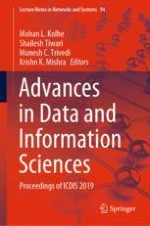2020 | OriginalPaper | Chapter
Pedestrian–Autonomous Vehicles Interaction Challenges: A Survey and a Solution to Pedestrian Intent Identification
Authors : Pranav Pandey, Jagannath V. Aghav
Published in: Advances in Data and Information Sciences
Publisher: Springer Singapore
Activate our intelligent search to find suitable subject content or patents.
Select sections of text to find matching patents with Artificial Intelligence. powered by
Select sections of text to find additional relevant content using AI-assisted search. powered by
